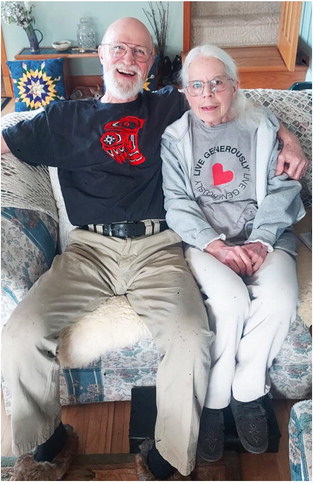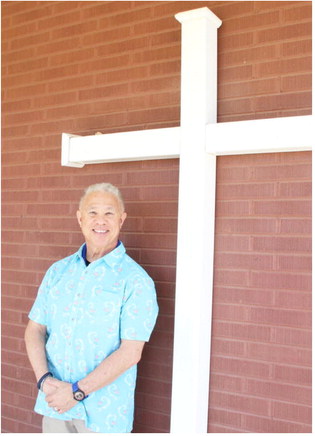Montana Free Press Looks At ‘Right To Know’; Is It Working In Montana?
By Mara Silvers Montana Free Press
According to the framers of Montana’s 1972 Constitution, the state’s predecessor Constitution, implemented when Montana became the 41st state admitted to the Union in 1889, had a serious omission when it came to the public’s relationship with government. There was no public “right to know” regarding the state’s governance.
In debating and drafting the new document, delegates to the 1972 constitutional convention in Helena tried to fix that. Situated within Article 2, Section 9, there now exists a tool meant to guard against government opacity. “Government is supposed to be open to the public to observe,” Montana Supreme Court Justice Laurie Mc-Kinnon said in a recent interview. The delegates of 1972, she said, were fearful “that government would take place behind closed doors and that … decisions concerning matters of public policy would be made without the public involvement.”
While other states have created laws that allow for public access to certain government documents, few have outlined such broad and clear constitutional guarantees of the public right to examine government proceedings and deliberations. McKinnon said the Montana delegates’ motivation may have come from, in part, the state’s history.
“We have so much history of corruption in the state, dating back to the Copper Kings,” she said. “So, you know, I think that [provision] was there for a reason.”
Transcripts of the Constitutional Convention document widespread agreement on the provision’s importance — a motion to strike Section 9 completely failed 76-14. It also wasn’t the document’s only open-government provision, but rather was built on a preceding section that allows for participation in government. Section 8 states that the public may “expect governmental agencies to afford such reasonable opportunity for citizen participation in the operation of the agencies” before final decisions are made. While Sections 8 and 9 are complementary, analysts of the Constitution say Section 10’s right to privacy also works in conjunction with the previous two. Billings attorney Martha Sheehy, who has spent decades representing Lee newspapers, said the three provisions function like a “three-legged stool.”
“Those three rights interact with each other and are cross-referenced in the Constitution,” Sheehy said. “And the balancing of those three rights is built into the Constitution, and that’s the genius of the Con-Con. It’s that they had the foresight to see that those would always be together.”
In practice, “balancing” the three rights means that none is individually absolute. The provisions are crafted with caveats, creating tests within each section that the courts are ultimately responsible for arbitrating.
Over the past 50 years, Montana’s courts have incrementally defined the practical contours of Montanans’ right to know. Among reams of cases, legal experts reference a few of special relevance.
Roughly a decade after the ratification of the 1972 Constitution, journalists at The Missoulian set up a direct test of the balance between the right to know and the right to privacy. The newspaper tried to access the performance reviews of university presidents, basing its request on the right to know and public interest. The Missoulian eventually lost the case, with the court writing that “the demands of individual privacy of the university presidents and other university personnel in confidential job performance evaluation sessions … clearly exceed the merits of public disclosure.”
Other cases expanded the application of Section 9. In 1992, after the mayor of Hamilton was accused by a city judge of sexual harassment and misconduct, a court found that the investigative report into his actions was subject to the right to know because the mayor was an elected official accountable to the public. In a Butte case three years later, the Montana Supreme Court found that school districts can be considered “public bodies” that are subject to Section 9’s right to know. That case also established a three-step process for evaluating the competing rights of privacy and public disclosure.
In 2013, the state Supreme Court refined its interpretation of privacy interests for public employees. It found that the Billings Gazette was not entitled to the names of five city workers who were disciplined for accessing pornography on their work computers because the employees had a reasonable expectation of privacy related to internal disciplinary procedures and “were not in a position of public trust” despite being publicly employed. Another case in 2018 put additional sideboards on the right to know when the court found that some documents held by the city of Billings were protected by attorney-client privilege and not subject to disclosure.
In those cases and many more, McKinnon said, measuring the breadth of the public’s right to know against an individual’s right to privacy is a delicate calculation.
“The right to privacy isn’t absolute, and the right to know isn’t absolute, and the right to participate as well isn’t absolute,” she said. “And those sideboards include the balancing of competing constitutional interests.”
McKinnon and her fellow justices don’t always agree on how to achieve that balance. In roughly a decade of service on the court, she’s sometimes dissented or issued critical concurring opinions in prominent right to know cases. Occasionally, a single case can generate three distinct opinions from different factions of the court. She said that level of debate and disagreement is a reminder of how complicated the constitutional balancing act can be.
“If it were easy, it wouldn’t be there,” she said.
The right to know becomes relevant not only during Supreme Court debates. More often, it’s reified and disputed in daily government operations, as records administrators and public agencies figure out how to square the obligations of Section 9 with the management of wide-ranging public records requests.
“For an important thing like this to actually function in practicality, there has to be some processes and procedures in place,” said Kyle Schmauch, communications manager for Republican leadership in the state Legislature and former communications director for the state auditor’s office. “What is a valid public records request? What things are not valid public information?”
In an era of constant emails, staff message boards, texts and phone calls, not to mention troves of state databases, logs and other records, Schmauch said complying with records requests is no easy task, even when government agents operate in good faith. Sometimes companies, journalists, members of the public and political campaign operators will seek mountains of public information, prompting government bodies to levy fees for requests that require substantial staff time for collection and legal review. Records keepers sometimes agree to waive such fees, depending on the situation and requester. In other cases, fees can be costly enough to
deter a requester from pursuing documents. Based on his time with the state auditor’s office, Schmauch said part of the difficulty of complying with records requests comes from figuring out what state law permits and requires government agents to do.
“There’s enough gray area in the laws currently that there’s a lot of room for inconsistency between different departments, different agencies,” Schmauch said. “Or there’s a lot of flexibility where they might treat one records requester different than another records requester.”
Schmauch and other public records experts said that many public agencies at the local and state level are complying with requests well enough to avoid complaint or lawsuits. In other cases, the spirit of Section 9 is at risk of erosion by bad actors, backlogged government offices and inefficient systems. Remedies to those shortcomings are limited and highly dependent on how aggressive members of the public are willing to be in actualizing their rights.
“The government has the information, so litigation is really the only real check. Litigation or at least the real threat of litigation,” said Raph Graybill, an attorney who worked as former Gov. Steve Bullock’s top lawyer. “They’ve got the information. They know what they have. They know what it would take to get it. They controlled the [fee] estimates. What are you going to do about it?”
But Graybill said the prospect of litigation premised on the language of Section 9 is no reason for pessimism. The public’s constitutional right to know creates a weighty leverage, even if exercising the right can be costly in terms of time and money.
“It makes a difference if the government knows in the bottom of its heart that you’re entitled to this information,” Graybill said. In Montana, he said, “the fact that you do get it and you could go to court and make a court give it to you — that’s incredibly powerful.”

